Math Mountains and math equations are used in math expressions from which you easily know about how addition and subtraction are related to each other. In this type of mountain, numbers that are addends show at the bottom and the total is at on the top.
Students use math mountains to solve story problems and missing addends. In today’s blog post, you will learn about why Math Mountains are drawn for two different numbers and some questions about math mountains. Keep reading to explore more.
Draw A Math Mountain With Two Different Numbers And Explain Why
In a math mountain, the top number represents the sum of the two numbers below it. So in this example, 5 is the sum of 2 and 3. Math mountains are often used as a visual aid for children learning basic arithmetic concepts such as addition and subtraction. They can also help to demonstrate the commutative property of addition, which states that the order of the numbers being added does not affect the sum.
As you know Addition and subtraction are important factors in math and the relation between them and as a student, you must have to understand the basic concepts of that.
Cards for Math Mountain Children may practice addition and subtraction with Math Mountain Cards. The relationship between addition, subtraction, and locating an unidentified addend is made evident by the cards.
The cards reaffirm that the same method is used to determine an unknown addend and to subtract. There are two key points that you keep in mind while doing Math Mountains are:
1) At the top of the mountain, there is ALWAYS the total or a higher number
2) Always at the base of the mountain are the partners
Children should use a MATH MOUNTAIN to find any missing partners or addends. Like here you see an example of math mountain:
If 4+2 Equals 6, then the mountain. It has the number 6 at its peak and the number 4 at its base. The addition of two is seen on the mountain’s sides.
The mountain would begin with the number 6 at the top and end with the number 4 at the base if the equation was 6-2=4. The number 2 would be subtracted and displayed on the mountain’s sides.
Auth.Services.Adobe.Com Refused To Connect
Example of Math Mountain with two different numbers
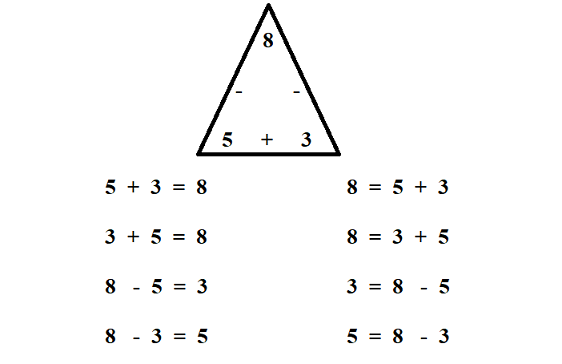
For example, in the picture in this post, you may cover up the three. The equation would then be 8-5. Since the 3 is covered up, the students could give their answer and then check it simply by lifting up their finger.
8
/ \
5 + 3
Not only are they able to practice that equation, but they can practice all eight of the equations that are derived from this one math mountain. By learning these fact families, they are learning the important interrelationship between addition and subtraction.
Even though you may have learned with flashcards, please try this approach as it is far more comprehensive than one-fact flash cards. Also, it is what we do in school, so you will be reinforcing what i am doing in the classroom.
How you can Create a Math Mountain?
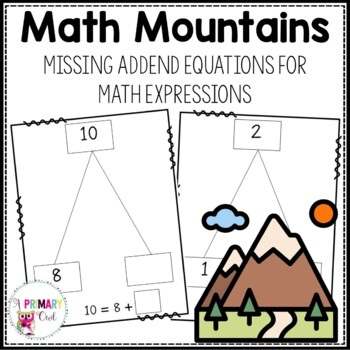
You can easily create a math mountain on both addition and subtraction. Creating a math mountain is really easy for kids by drawing on a paper and label with the numbers. Here you will teach how to create a math mountain with two different numbers. For Example:
First, you must label the mountain at the top with “8” if you wish to teach a question with a beginning number of 8, and a final portion containing an answer, like “13,”
Another one is:
The Main Mountain’s base or the number 15 is known as the peak at the end or 9+6.
Concept of Math Mountain with two different numbers in Addition
Here you will learn how Math Mountains are used in Addition with two different numbers.
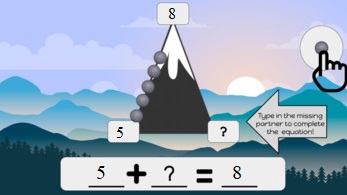
Students solve to find the missing partner by placing the number 8 at the peak and the number 5 at the base of a math mountain.
8
/ \
5 ?
It is still important to use a math mountain in the subtraction problem 8 – ?= 5. Partner 5 goes at the bottom, and 8 goes at the top.
So here,3 at the bottom which shows that 5+3=8. So it easily shows how number adds with each other to get 8 at the top.
Concept of Math Mountain with two different numbers in Subtraction
Math Mountain is the best way to teach the children to draw two different numbers of Math Mountain in subtraction.
Children subtract 8-4 to obtain 4 if the bottom number is 8 and the following number is 4. Then subtract the following number by 8, and so on until they reach the mountain’s peak.
4
/ \
8 – 4
Smaller numbers may be used for younger youngsters. Whereas older kids can use bigger numbers, negative or positive numbers, or even both to make the game more difficult.
It is still important to use a math’s mountain in the subtraction problem 8 – 3= 5. Partner 5 goes at the bottom, and 8 goes at the top.
Some other question of Math mountain of addition and Subtraction for you. Try to solve these question for your children for further concepts of math mountains.
3 Major Mistakes To Avoid
Math Mountains are really easy for clearing the concepts of addition and subtraction with some fun. But sometimes student makes mistakes while doing that. You must follow some rules of math mountain to solve your math expression problems.
You must avoid these three mistakes while doing math mountain questions.
1. Don’t Forget The Order Of Operation
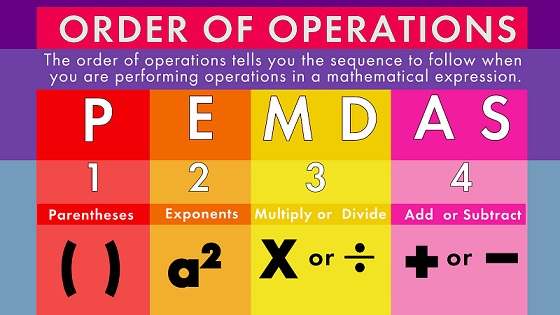
Like when you solve a math problem you must follow the rule of PEMDAS. PEMDAS stands for Parentheses, Exponents, Multiplication, Division, Addition, and Subtraction.
2. Never Miss The Number
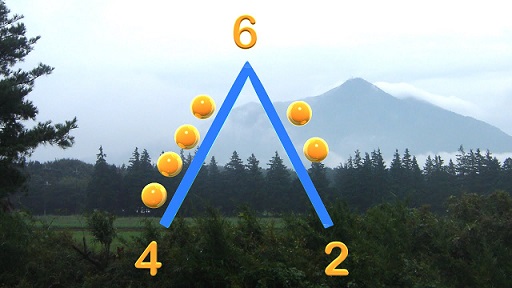
Mixing the two distinct number IT series to mix the numbers in the math’s mountain according to their values or order.
3. Always Ignore Negative Numbers

It is important to ignore negative numbers while making math mountains of two numbers. Because it makes your problem more challenging. So avoid the negative numbers.
Avoid the above mistakes to makes your problem clear and easy to solvable.
Lesson 1: Represent Addition And Subtraction
For each Math Mountain, draw two equations. Add another equation and make a Math Mountain. 5 + = 17 – = 7 + = 12
Add = 0 + = = = = = = = = = = = Addition = 5-5 = 4-1 = 9-6 = 5-3 = 5-0 = 1-9 = 14-6 = 15 – = 9 . Push Your Ideas Records from the yard sale got wet. List the figures that belong in the table. Item Daily Day Saturday Sunday Birdhouse Potholder Picture Frame Number Sold.
Lesson 2: Relate Addition And Subtraction
Solve the math problems with the following formulas: = + = = 2. Construct and Fix For one of the above equations, compose and resolve a word problem. 3. Create a Visual and a Description Create two separate 12-point math mountains. Why can you create two distinct math mountains?
Compose two equations for each Math Mountain. Add = = + 1 = = = + = Subtract = 4-2 = – 1 = = 16-9 = 15 – = 5. Push Your Thoughts For this Math Mountain, create four equations.
Lesson 3: Make A Ten Strategies
Make a ten to determine the sum. = 4 + = = = = + 5 = = = = = = + 9 = = = = = = = = Critical Analysis Describe how to create a ten to locate plus. Compose two equations for each Math Mountain. Add 7 + + 6 Subtract 12-7 17-9 14-6 15-7 16 – 3. Push Your Thoughts Create a total of four distinct Math Mountains.
7 = 14 or 14 = 6 previously or more = 14 2 more to 10; 4 more to 14; already; Locate the mysterious addend (unknown partner) = = + = = = 9 + = = = 7 + = = = 17-9 = 5. + = = 16-7 = = = 12-7 = = = 12-9 =. Describe Your Thoughts Choose one of the equations above. Describe how to make ten to find the partner.
Lesson 4: Relate Unknown Addends And Subtraction 7
= 14 or 14 = 6 Previously or more = 14 Already 4 more to 14 in 2 more rounds, or Locate the unknown addend (unknown partner) = = + = = = 9 + = = = 7 + = = = 17-9 = 5. Furthermore, find the unknown partner = = 16-7 = = = 12-7 = = = 12-9 =. Describe Your Thoughts. Choose one of the equations above. Describe how to construct a ten to locate your companion.
1-4 Subtract 15 – 1-9 13-4 16-9 14-7 Add + 6 + 5 + 3. Finish the math problems and mountains. Create a ten to get the answer: = 7 + = = + 9 = + = 5. Expand Your Thoughts Which problem can be resolved the simplest by utilizing the make-a-ten method? Reasons why
Lesson 5: More Practice With Unknown Addends And Teen Totals 9
The unknowable addend (partner) is written as = = 3 + = = = 9 + = = = 7 + = = = 5 + = = = 13-7 = = = 11-6 = = = 11-2 =. + = = 13-6 = Critical Analysis Describe how the math diagram may be used to solve the equation + = 14 already = 14.
Subtract 15-9 1-9 12 – 11-7 13-5 Add 7 + + 9 3. Finish the math problems and mountains. = + = = determine the unknown partner (addend) for the equation 5 + =. Push Your Thoughts a graphic to aid in problem-solving 7 + =
Lesson 6: Odd And Even Numbers
Make pairs by drawing lines. Type odd or even. the equation for the addition of doubles is finished. = = = = = = = = 12
Add 6 + 3 + Subtract 15 – 17-9 16-7 1-9 11-3 3. Add another equation and create a Math Mountain. Create a ten to get the answer: = = + 7 = + 4 = = = 5. Push Your Thoughts Create a Math Mountain using just two distinct integers. Tell us why.
What number goes at top of Math Mountain?
The number at the top of a math mountain is the sum of the two numbers below it. In other words, to find the number at the top of the mountain, you need to add the two numbers at the bottom of the mountain. For example, if the numbers at the bottom of the mountain are 4 and 6, then the number at the top of the mountain would be 10 (4+6=10).
What is the definition of math mountain?
Math Mountain is a visual representation of an arithmetic problem used in elementary school math education, where a mountain-like structure is created with the larger number at the top and the smaller number at the bottom, and the student adds or subtracts the numbers to climb up or down the mountain to reach the solution.
How do you solve a math mountain?
To solve a math mountain, start at the top and work your way down by using addition and subtraction to find the missing numbers. The top number represents the sum of the two numbers below it. You can either add the two numbers at the bottom to find the top number or subtract one of the numbers from the top number to find the other number.
How could you use making a ten when adding?
Making a ten when adding involves breaking one of the addends into two parts, with one part being the amount needed to make the other addend a multiple of ten. This strategy helps simplify addition problems and make them easier to solve mentally. For example, to add 8 + 6, one could break 6 into 2 + 4, and then add 2 to 8 to make 10, which leaves 4 to be added, resulting in the answer of 14.
Conclusion
Hopefully the above information is helpful for you. If you have any queries, feel free to put them in the comment box. Have a good day.

